Lighting for houseplants is a very important topic in plant care. The optimal lighting for plants can help them thrive and grow.
When you bring your new plant baby home from the plant nursery, one of the first things to consider is lighting. Different plants require different lighting set ups. Most houseplants will do best in bright indirect light.
Bright indirect light refers to the light that a plant will receive after it bounces off another source. Direct light refers to bright sunlight directly hitting your plant leaves.
Houseplants that are marketed as low light plants will often grow quicker and stronger in bright indirect light. Just because a plant can survive in low light conditions, does not mean that plant will thrive. Snake plants can survive just fine in low light. But they grow faster when placed in bright indirect light.
In this article we will discuss the optimal placement to achieve the best lighting for plants. There are many things to consider about lighting so lets get started.

Which windows are best for houseplants?
We will discuss the different window facing options for the Northern Hemisphere. The light will change throughout the day, and the intensity will vary depending on the time. Windows that face the morning light will have softer light that is optimal for growing most plants. By the afternoon the light becomes very intense and can burn plant leaves that are left in the direct hot light.
West Facing Windows- These windows provide a brilliant opportunity for bright indirect light. But be careful putting plants in the path of the hot afternoon sun. West windows are where the sun sets. This sunlight is the hottest of the day and the most damaging for plants.
I have large floor to ceiling west windows in my living room. I place plants out of the path of the sun and use the bright indirect light to my advantage. Before I learned about windows and light, I burned my poor peace lily plant until it was a brown and droopy specimen.
East Facing Windows- The opposite of the West window, the East window lets in bright morning light. This is some of the best light for houseplants. The rays of sun are not too intense and hot allowing plants to benefit from some direct sunlight. I place all of my propagations in my East facing window. They do really well there and it seems to be a favorite window for my plants.
South Facing Windows- These are great windows for houseplants and can often provide optimal light. The South windows benefit from the sun transitioning from morning to evening (East to West). The light is bright but often soft enough to not harm the plants. Just make sure you know what the lighting needs are for your specific plant.
North Facing Windows- The Northern light is the weakest light that houses will receive. This makes it a great spot for lower light plants. In the winter they will not receive a lot of light as the daylight hours are shorter.
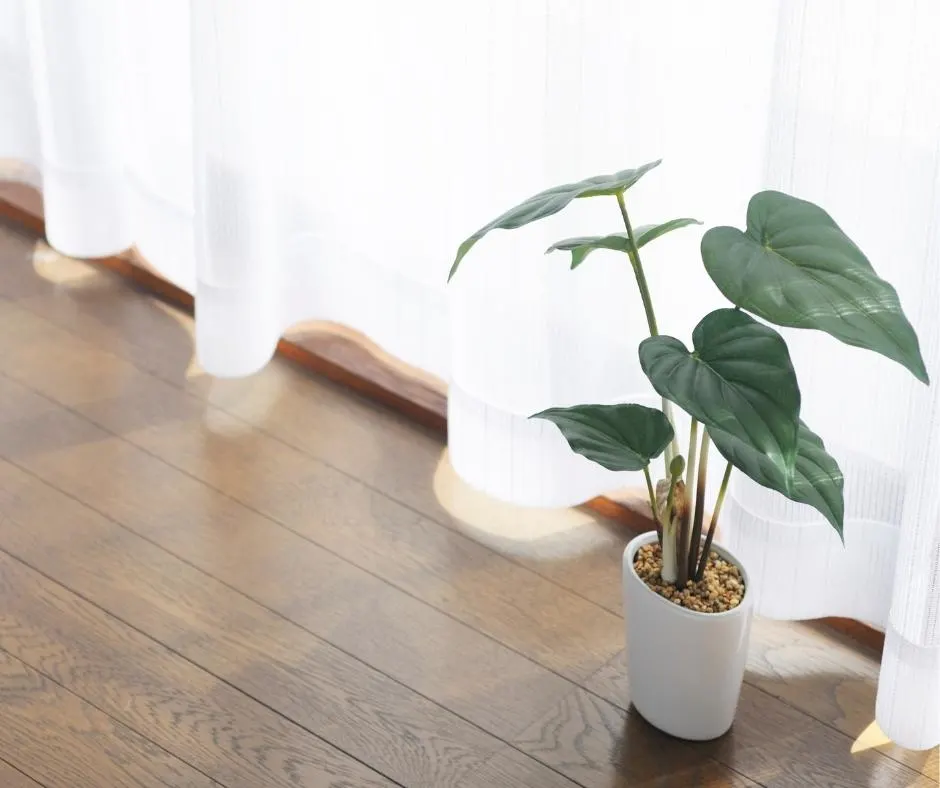
Symptoms of too much light
Sometimes too much of a good thing can be harmful. This is the case with sunlight and houseplants. The intense direct sunlight can easily burn the leaves of houseplants. Most plants will not be able to take hours of hot direct sunlight. Unfortunately our plant cannot tell us when they are getting too much sun. Here are a few symptoms we can look for.
- Brown crispy leaves
- Scorched sections on plant leaves
- Overly dry and hard soil
- Sometimes leaves can appear dry and wrinkly
- Singed tips of leaves
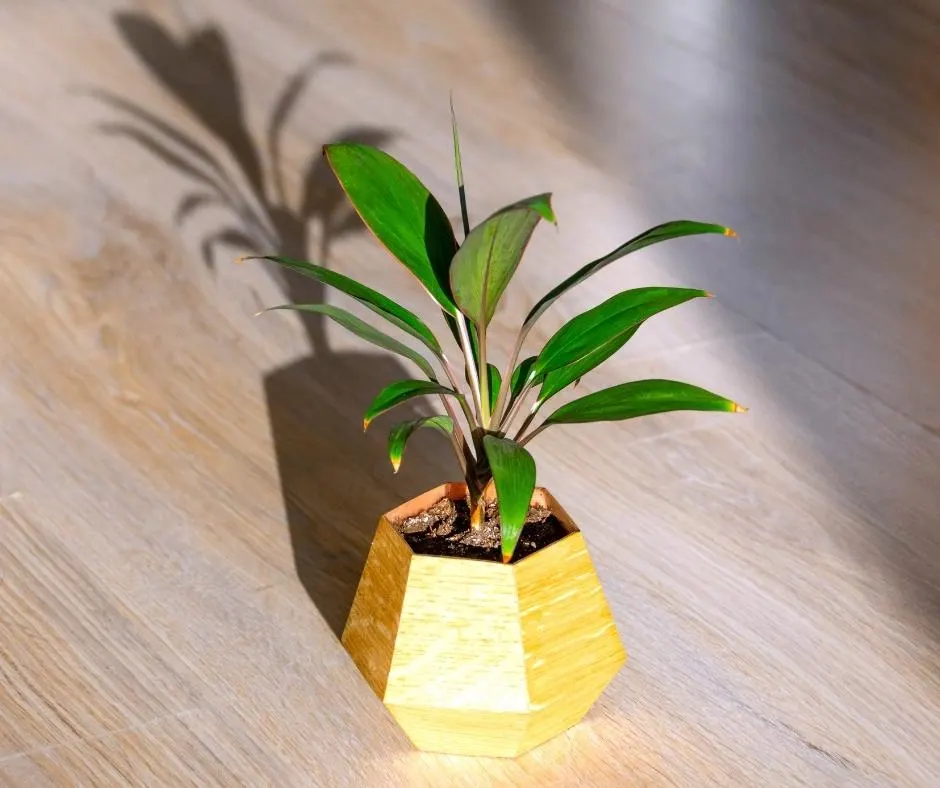
Symptoms of not enough light
Poor lighting can be every bit as damaging (if not worse) than too much light. If your plant is not in optimal light it can grow poorly and even die off altogether. Fortunately plants give off a lot of hints when they aren’t happy and if we pay attention, we can quickly reverse the problems. Some symptoms of low/poor light can include:
- Leggy growth
- Very slow growth
- Yellowing leaves
- Plants dropping leaves
- Plant leaning towards light source
- Small new leaf growth
- Sparse and uneven growth (especially in vining plants)
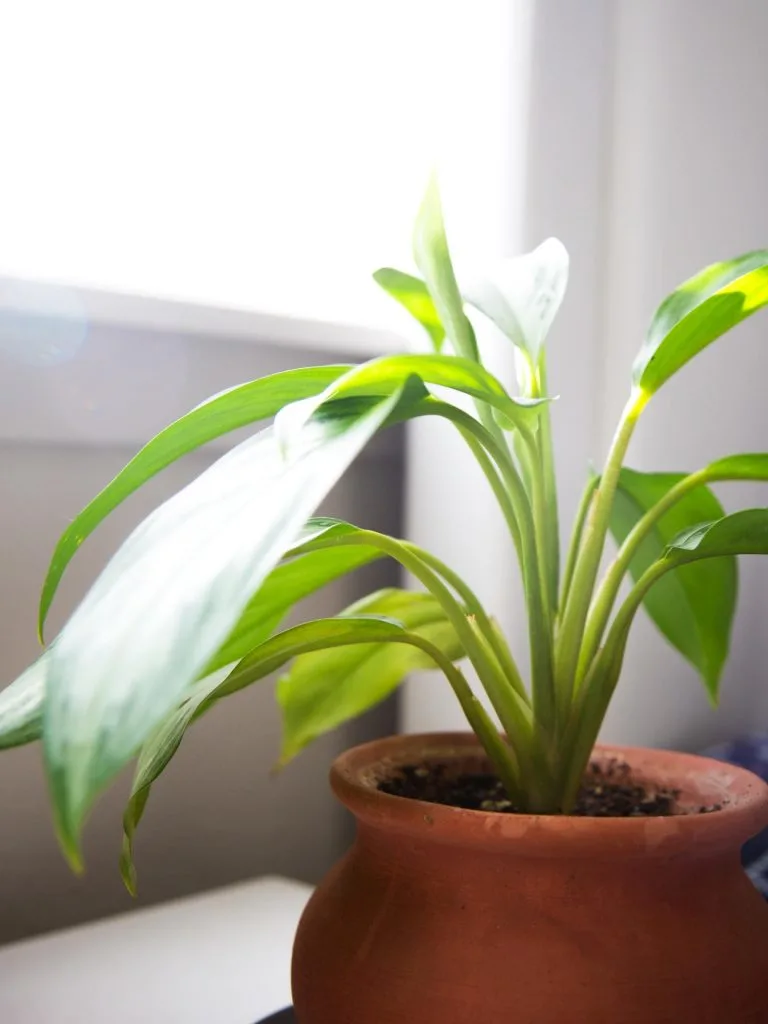
Lighting needs in winter
The light index in winter months provides a challenge for all plant parents. You will notice significantly slower growth from your plants. If you are a fan of propagating you may notice that your plants root a lot slower during the winter. The sunlight hours drop drastically leaving our poor plants wanting more. On Winter Solstice we only receive between 8-10 hours of daylight compared to summer when it’s between 14-16 hours of light.
There are many ways that we can help our plants get through those dark winter months. Check out our post on wintering over your plants.
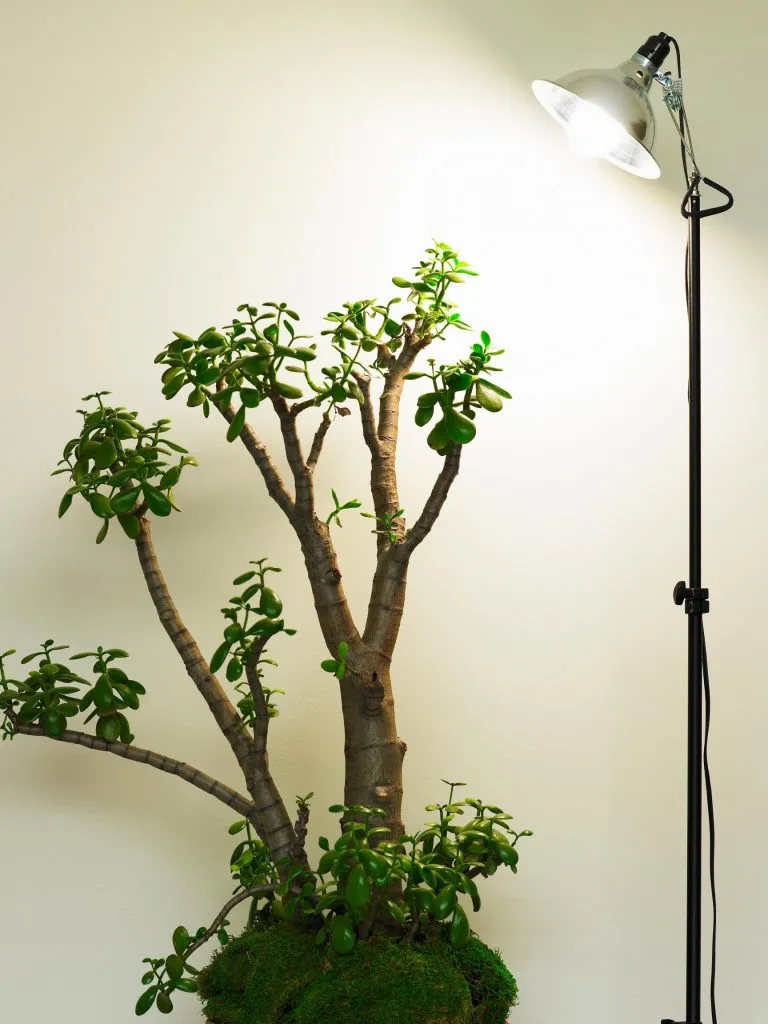
Artificial light for houseplants
You can supplement poor light by using artificial lights. Artificial grow lights are a great way to get your plants through the winter. Lighting for plants is often measured by Foot-candles. You can purchase a light reading meter to help you determine what light index you are starting with.
I like to use grow lights to encourage faster rooting when propagating my plants. They are also fantastic to supplement light in a dark corner or greenhouse. I use a grow light all winter long on my variegated monstera to help encourage growth. So far this winter it has put on a new stem and a whole new leaf! If you don’t like the look of the traditional grow lights, a great option is to get a grow light bulb and stick it in your favorite lamp.
Follow Us:
Find us on YouTube, Instagram , Pinterest and TikTok! We love to Plant chat. We also comment, like and occasionally share your content to our daily stories. We’d love to see your plants. Share your joy in your houseplants. Happy Planting!
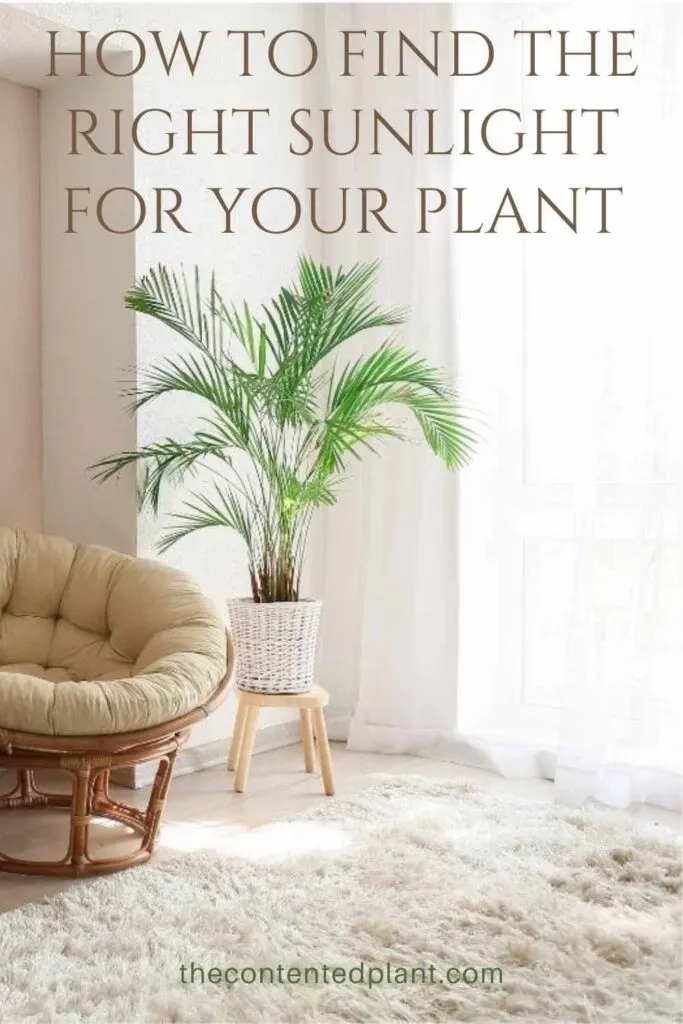

Best Low Light Indoor Plants - The Contented Plant
Friday 13th of January 2023
[…] all the technical details of plant lighting this article is very helpful. For more information on choosing the best lighting for your plants, read this […]